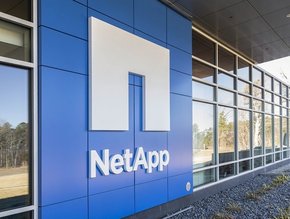Lenovo announces 2050 net zero sustainability ambitions

Lenovo has announced its goal to reach net-zero greenhouse gas (GHG) emissions by 2050, validated and approved by the Science Based Targets initiative (SBTi), a partnership between the UN Global Compact, CDP and World Wide Fund for Nature – making it the first PC and smartphone maker and one of only 139 companies in the world with a net-zero target validated by SBTi.
Lenovo is in the first group of companies to receive net-zero validation from Science Based Targets initiative, making it the first PC and smartphone maker and one of only 139 companies around the world with targets validated by the Net-Zero Standard.
Overall net zero target
Lenovo commits to reach net-zero GHG emissions across the value chain by FY2049/2050.
Near-term target
Lenovo commits to reduce absolute scope 1 and scope 2 GHG emissions 50% by FY2029/2030 from a FY2018/2019 base year. Lenovo also commits to reduce scope 3 GHG emissions from use of sold products 35% on average for comparable products within the same timeframe. Lenovo commits to reduce scope 3 GHG emissions from purchased goods and services 66.5% per million US$ gross profit within the same timeframe. Lenovo further commits to reduce scope 3 GHG emissions from upstream transportation and distribution 25% per tonne-km of transported product by within the same timeframe.
Long-term target
Lenovo commits to reduce absolute scope 1, 2, and 3 GHG emissions by 90% by FY2049/50 from a FY2018/19 base year.
Lenovo is an early adopter of the science-based emissions reduction approach. After receiving approval for near-term 2030 emissions reduction goals in 2020 and helping to road test the first of its kind Net-Zero Standard.
“Success in achieving net zero depends on a transparent, science-based and collaborative framework that will keep organizations accountable for the long run. SBTi has created that framework and will empower companies to expedite emissions reduction,” commented Carolina Milanesi, Founder of The Heart of Tech, an ESG-focused consultancy.
Strategy
Primary strategies for reducing Lenovo’s emissions include reducing the environmental impact of its products, harnessing innovation to increase sustainability in its manufacturing, and decreasing emissions across its operations and value chain. These strategies have been outlined in the company’s Journey to Net-Zero video series, which demonstrates how Lenovo’s experts are changing business processes to meet net-zero targets.
Lenovo’s emissions measurements will contribute to a wider body of collaborative data to understand and limit climate change, in accordance with the Paris Agreement’s goal to limit warming to no more than 1.5 degrees Celsius above pre-industrial levels. More than 4,000 companies around the world are in the process of aligning their emissions reduction goals to SBTi’s science-based methodology and validation processes.






